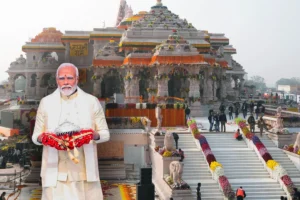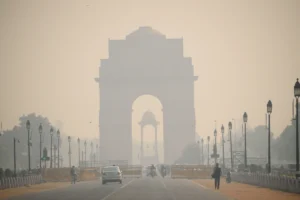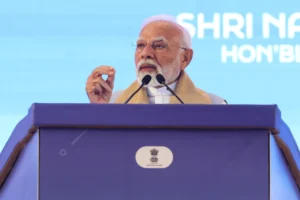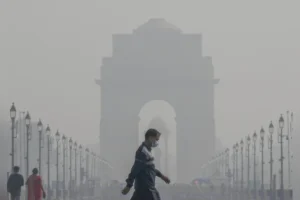
The national capital is once again battling hazardous air pollution as a thick blanket of smog has descended over Delhi and its neighbouring NCR regions.
According to data from the Central Pollution Control Board (CPCB), Delhi’s average Air Quality Index (AQI) stood at 372 at 7 AM on Monday, placing it firmly in the ‘severe’ category.
Most areas across the capital recorded AQI levels between 300 and 400, signalling extremely poor to hazardous air quality conditions.
The situation was equally grim in adjoining regions — Faridabad (312), Ghaziabad (318), Greater Noida (325), Gurugram (328), and Noida (310) — all within the ‘very poor’ to ‘severe’ range.
Environmental and health experts have raised an alarm over the worsening conditions, warning that sustained exposure to such high pollution levels can trigger respiratory and cardiovascular illnesses.
Many Delhi residents reported breathing difficulties, throat irritation, and burning eyes as the city remained shrouded in smog throughout the day.
Doctors have advised vulnerable groups, including children and the elderly, to stay indoors and use N95 masks when venturing out.
Weather Adds to the Woes
Delhi is simultaneously witnessing an early winter chill. The minimum temperature has dropped to 11°C, about 3.3°C below normal, while daytime temperatures hover around 27–28°C.
The India Meteorological Department (IMD) has predicted clear skies with cold winds of 15–20 km/h, making mornings and evenings particularly chilly.
Meteorologists say the deterioration in air quality is the result of a combination of low wind speed, increased humidity, and dropping temperatures, all of which trap pollutants near the ground.
The continuing stubble burning in neighbouring states, especially Punjab and Haryana, has further worsened the situation.
Despite several measures under the Graded Response Action Plan (GRAP) — including construction bans, vehicular restrictions, and deployment of anti-smog guns — Delhi continues to struggle for clean air.
Authorities have also intensified checks on pollution from industrial units and road dust, but with limited visible impact so far.
Health experts have urged residents to use air purifiers indoors and refrain from morning walks or outdoor exercise until conditions improve.
Schools are expected to remain under advisories as the city endures yet another winter smog episode.
As Delhi-NCR battles its annual pollution crisis, residents are left hoping for strong winds or rain to disperse the choking haze.
Until then, the capital remains under a toxic spell, highlighting the urgent need for long-term, coordinated solutions to tackle one of India’s most persistent environmental challenges.
Also Read: Smog Engulfs Delhi-NCR; Pollution Levels Hit Season’s Worst
To read more such news, download Bharat Express news apps



















